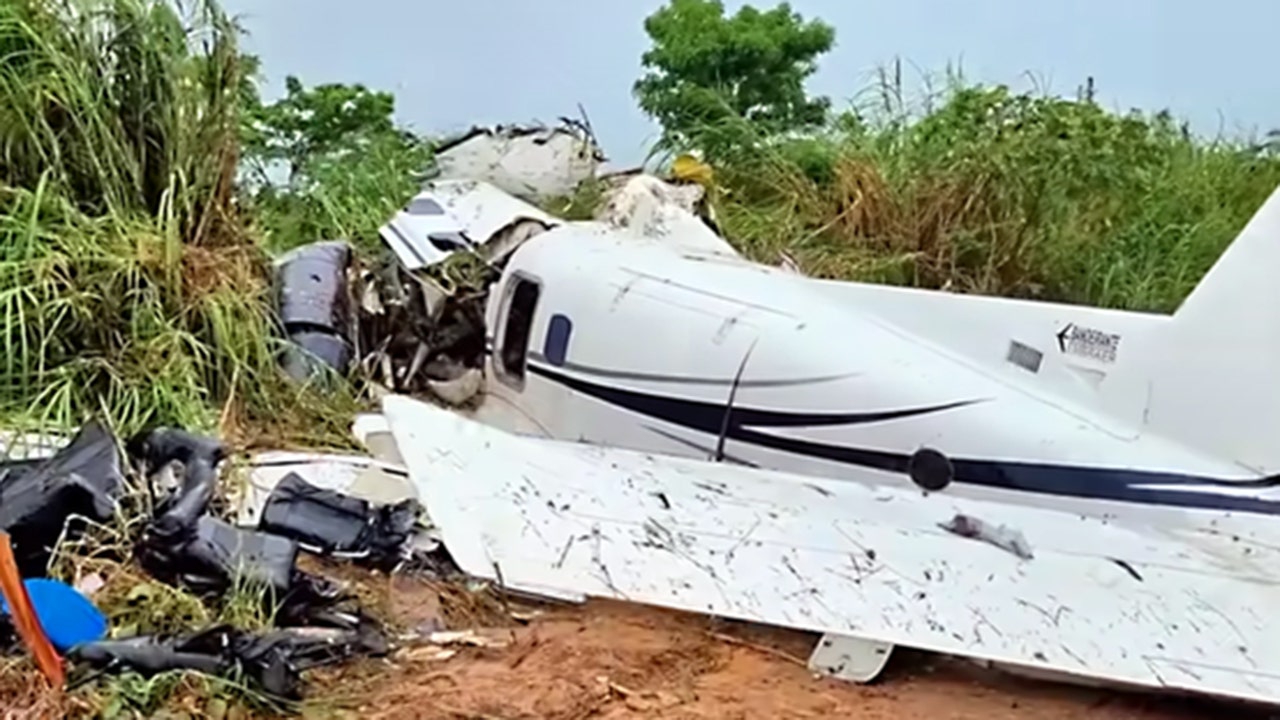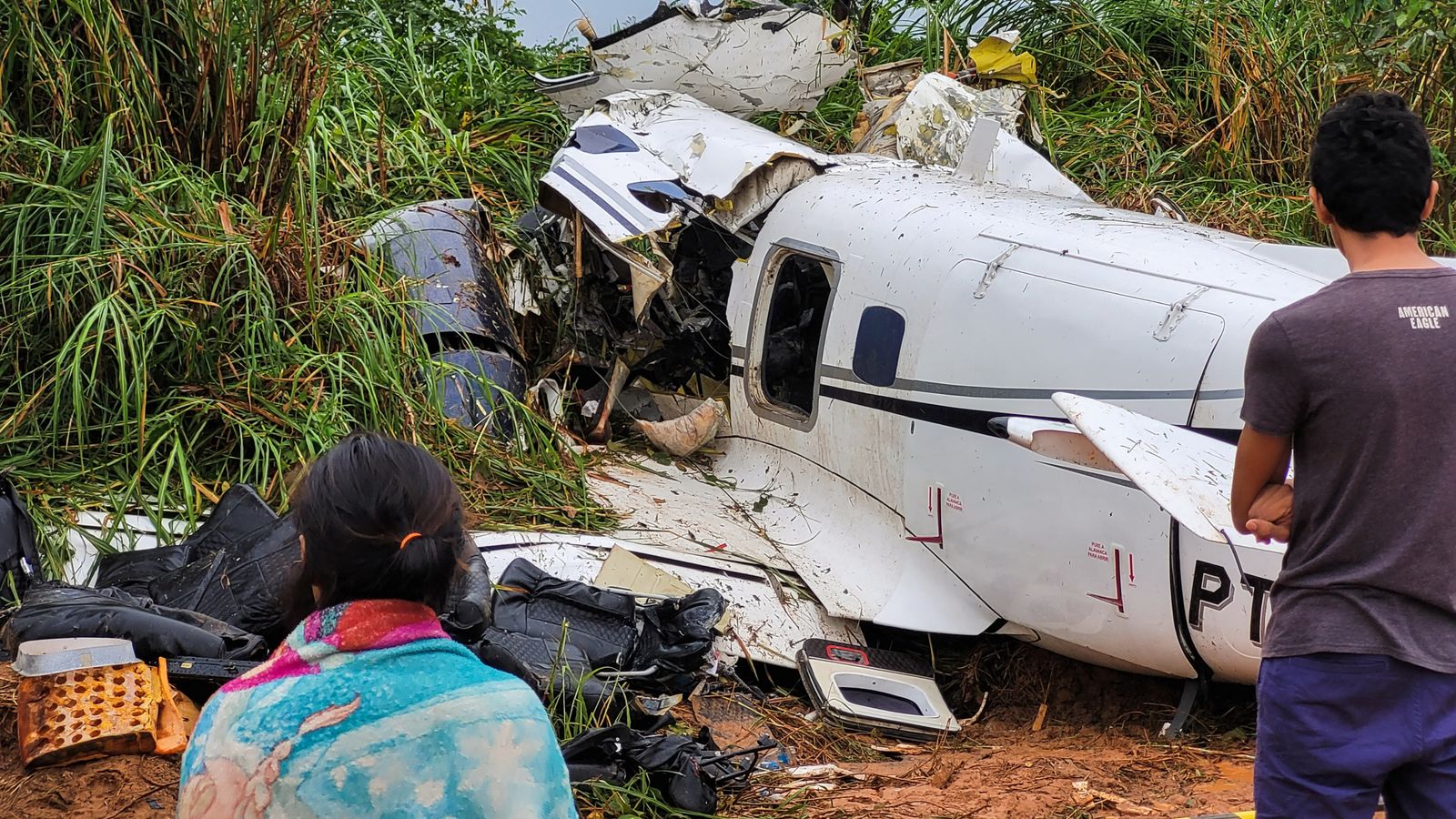Historical Context of Plane Crashes in Brazil

Brazil, a country with a vast geographic expanse and a growing aviation industry, has unfortunately witnessed its fair share of plane crashes throughout history. These events have left a lasting impact on the nation, prompting investigations, reforms, and advancements in aviation safety.
Significant Plane Crashes in Brazil, Plane in brazil crash
The history of aviation in Brazil is intertwined with tragic incidents that have shaped the country’s approach to aviation safety. Here are some of the most significant plane crashes:
- 1973 Varig Flight 831: This Boeing 707 crashed into the Andes Mountains in Chile, killing 61 people. The accident highlighted the importance of proper flight planning and weather monitoring.
- 1982 TAM Airlines Flight 352: This Fokker F28 Fellowship crashed into a residential area in São Paulo, killing 95 people. The crash led to investigations into the airline’s maintenance practices and regulations.
- 1989 Gol Transportes Aéreos Flight 1907: This Boeing 737-800 collided with a Cessna 172 in the Amazon rainforest, killing all 154 passengers and crew on board. This tragedy sparked discussions about air traffic control systems and the need for improved airspace management.
- 2007 TAM Airlines Flight 3054: This Airbus A320 crashed at São Paulo’s Congonhas Airport, killing 199 people. The accident led to a review of runway safety procedures and the implementation of new safety regulations.
Trends in Plane Crash Frequency and Causes
Analyzing plane crash data in Brazil reveals trends and patterns over time. While the frequency of crashes has generally decreased, there are recurring causes:
- Pilot error: Human error, including fatigue, lack of training, and poor decision-making, remains a significant factor in many accidents.
- Mechanical failure: Inadequate maintenance, faulty equipment, and design flaws can contribute to crashes.
- Weather conditions: Severe weather, including thunderstorms, fog, and strong winds, can pose challenges to pilots and aircraft.
- Air traffic control issues: Communication breakdowns, inadequate airspace management, and insufficient infrastructure can lead to collisions and other incidents.
Regulations, Safety Standards, and Technological Advancements
Brazil has taken significant steps to improve aviation safety through:
- Stringent regulations: The National Civil Aviation Agency (ANAC) has implemented stricter regulations for airlines, pilots, and aircraft maintenance.
- Enhanced safety standards: Brazil has adopted international safety standards and protocols to ensure compliance with best practices.
- Technological advancements: The use of modern navigation systems, collision avoidance technology, and advanced flight simulators has contributed to increased safety.
Impact of Plane Crashes on Brazil: Plane In Brazil Crash

Plane crashes in Brazil have had a profound impact on the country, leaving behind scars that extend beyond the immediate tragedy. These events have shaken the nation, forcing it to confront issues related to safety, infrastructure, and the human cost of aviation accidents.
Social Impact
Plane crashes have a devastating impact on families and communities. The loss of life is a profound tragedy, leaving behind a void that can never be filled. The impact on families is immediate and enduring, with grief, trauma, and the loss of loved ones affecting all aspects of their lives. Beyond the immediate families, communities are also affected. The loss of prominent figures, business leaders, or members of the community can disrupt social fabric and leave a sense of vulnerability.
Economic Impact
Plane crashes can have significant economic consequences for Brazil. The loss of life, especially in the case of high-profile accidents, can impact industries and businesses. The cost of air travel safety measures, investigations, and compensation claims adds to the financial burden. Furthermore, the impact on tourism and the aviation industry can be significant, leading to a decline in passenger confidence and economic activity.
Political Impact
Plane crashes can trigger political responses in Brazil. The government is often under pressure to address safety concerns and improve aviation regulations. These events can lead to public inquiries, investigations, and policy changes aimed at preventing future accidents. The government’s response to plane crashes can also be a test of its competence and ability to manage crises.
Response of the Government and Aviation Authorities
The Brazilian government and aviation authorities have responded to plane crashes with a combination of measures. These include:
- Strengthening safety regulations and enforcement
- Investing in infrastructure and technology
- Improving training and certification standards for pilots and air traffic controllers
- Establishing independent investigative bodies to analyze accidents and identify causes
- Implementing compensation programs for victims and their families
Media Coverage and Public Perception
Media coverage of plane crashes in Brazil has a significant impact on public perception. The media plays a crucial role in shaping public opinion, informing the public about the events, and holding authorities accountable. However, media coverage can also be sensationalized, leading to fear and anxiety among the public. This can, in turn, affect passenger confidence and the aviation industry’s economic performance.
“Plane crashes are often a focal point for public scrutiny, as they raise questions about safety, accountability, and the government’s ability to respond effectively.”
Plane in brazil crash – The news of a plane crash in Brazil is always a tragic reminder of the fragility of life. Thankfully, investigators are working tirelessly to uncover the causes of these incidents, ensuring that such tragedies are minimized in the future.
For the latest updates on the ongoing investigation into a recent plane crash, you can visit plane crash brazil today to stay informed. It’s important to remember that these events are complex, and understanding the circumstances surrounding them can help prevent future accidents.
The recent plane crash in Brazil is a tragedy, and our thoughts are with the victims and their families. While the cause of the crash is still under investigation, it’s worth noting that the ATR 72 plane, a workhorse of regional aviation , has a strong safety record.
However, any accident involving this type of aircraft should be carefully examined to ensure the continued safety of air travel.
